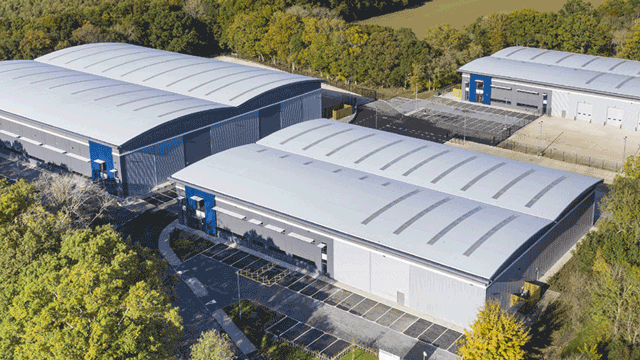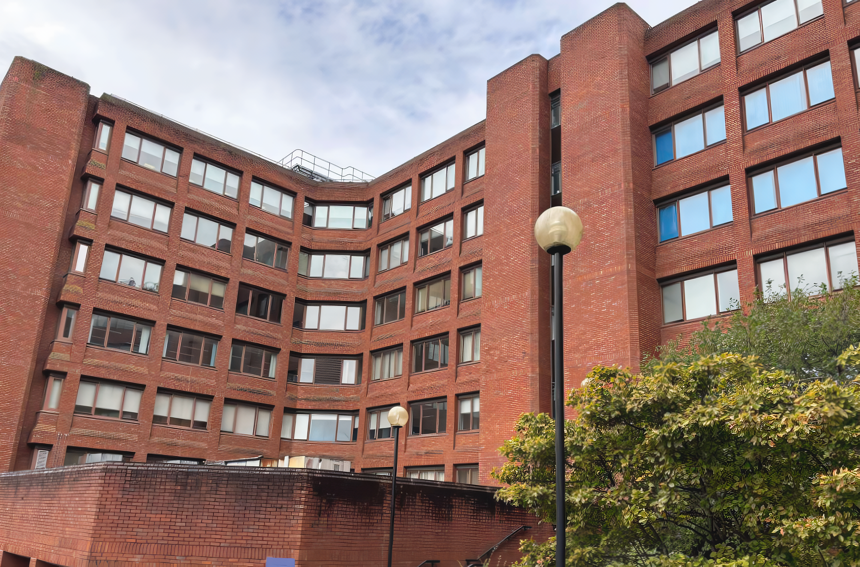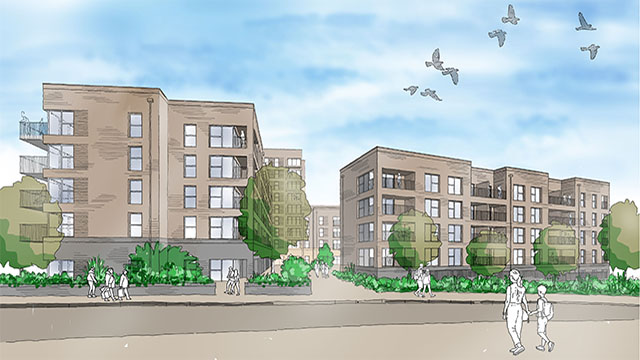Verve Properties likes a challenge. Director Ashley Nicholson is a member of Save Britain’s Heritage and has an eye for the potential in even the most dilapidated buildings.
It is this keen eye that led him and fellow director Tim Pain into buying the former Central Trading Estate in Bristol, a 12-acre site with 225,000 sq ft of existing buildings, many Victorian. Some buildings had been empty for 16 years and, says Nicholson, could not have been let for £1 per sq ft.
Both Nicholson and Pain cut their teeth in property development, the former with Sapcote, the latter with Allied London. Most importantly, Nicholson says, it was their background in bringing old buildings back into use that has steered Verve.
Set up six years ago, the developer already has 10 projects either under its belt or on the go, mainly in the South East (see box). All are old buildings brought back into use with an imagination and individuality that is not always seen in regeneration.
Nicholson believes too many buildings are being demolished when they could be saved. He explains: “The industrial sector is dying and the office sector is stuck in specifications. So we tend to choose buildings that are quirky, that others would demolish, so we can buy them quite economically. The locations tend to be quite fringe – otherwise the institutions or housebuilders would have bought them.”
Indeed, the Manchester-born developer has found that he has half a mile of property with an identity crisis, sitting in a part of Bristol which no one can name. It is about a mile from the station, sandwiched between the Bath Road and the tidal River Avon, with the proposed Bristol Arena development as a neighbour.
As with many of Verve’s developments, Nicholson is looking to attract small occupiers from the creative industries, which is a challenge in itself (see box). He sees media as a growth area and was surprised that Bristol did not have a creative quarter, after spending two months “camped out” in the city to get a feel of it. He has lived in the capital for 16 years but says: “I probably know Bristol and how it ticks better than parts of London.”
Despite his knowledge and new-found love for the old character of Bristol, he admits there is still an element of risk in developing a new concept in a part of town with which people are not familiar.
So what is this new concept? The three- phase development, which is called the Paintworks, echoing the original use of part of the site, will see a combination of refurbished, reconfigured space alongside new build. It comprises a mixture of office, studio, live-work and residential uses.
Victorian factory buildings are being divided to create streetscapes. This allows the space to be more easily divided, making the most of natural light and marrying elements of the old with the new. Building heights mean mezzanines for living or work space can be created.
The first phase is virtually complete and some units were let or sold prior to completion. New occupiers include architects, graphic designers, web designers and a local artist, says Charles Carden, associate at Alder King, which is letting agent for the commercial space.
Nicholson adds: “The occupiers we tend to attract like the flexibility – they don’t fit the product that the property industry tends to churn out. We don’t pretend to aim for the majority market. We tend to design carefully and accept that what we do won’t suit everyone.”
He admits that people initially laughed at the plans. However, it is a testament to his confidence and belief in what Verve is trying to achieve at the Paintworks that some of his new tenants have moved across town from the affluent suburb of Clifton.
It is not just Cliftonites who have been won over. “The planners were surprised that we approached the site from an employment angle and treated the residential as just a bolt-on. Everyone told us Bristol council was conservative and it would be difficult to do something innovative and different but we have found it very supportive,” he says.
Where to pitch the rents for the Paintworks is another challenge entirely. This type of space is unusual and the occupiers not run of the mill. Catherine Collis, associate at Alder King, says it has been a “bit of a test”. Nicholson adds that they have tried to get away from local pricing, admitting that they do not always get it right on their schemes.
“In terms of costs, we learn by our mistakes. We always think we’ve got it nailed, but we haven’t,” he says.
The residential and some commercial units are being sold off to recoup the capital cost. However, Nicholson wants to hold on to as much of the scheme as possible, as he sees the Paintworks as a long-term prospect. Phase 2 already has planning permission and will mirror the first phase albeit, perhaps, with some larger units to accommodate growing interest from bigger occupiers.
Phase 3 will involve more new development, using the slope of the site to increase the existing 63,000 sq ft of space to as much as 400,000 sq ft. Again, this will be mixed use but maybe will include some student accommodation. “We are in discussion with the planners about phase 3 but they might laugh us out of court about that,” says Nicholson.
With early stages of the Paintworks having proved a success, it could well be Verve that has the last laugh.
The Paintworks space is not quite industrial space, yet some of its occupiers are involved in industry. While it is not exactly office space either, it is being used as such.
This is the dilemma facing Alder King, which is charged with finding tenants or buyers for the commercial elements. The challenge is made greater because most of the companies who would be interested in this sort of space are small, do not have their own agents and would not necessarily be on the lookout for To Let boards.
There has been no formal marketing of the Paintworks and Verve director Ashley Nicholson does not intend to have an agents’ launch. He says: “Through word of mouth, we are creating a buzz. In many ways, it is anti marketing. It’s a form of inverted snobbery that makes the scheme desirable.”
Catherine Collis, an associate in the office department at Alder King, says: “It’s a different approach because they are different types of businesses from what we are used to dealing with.
“We’ve had stuff in the local press, magazines like Clifton Life. It’s very much a function of what it is,” says colleague Charles Carden, who normally looks after industrial space.
Collis adds: “Seventy-eight per cent of the enquiries are from the website, while regular office and industrial space enquiries tend to come from more conventional routes, with only about 20% coming from the web.”
She says many of the prospective tenants are not very commercially aware and do not have the traditional covenant strength “so we have to take a flier to get the right people in here”.
Carden admits he has been surprised by the companies that have shown an interest.
Despite the unconventional ways of working and the risks of dealing with the unknown, neither would swap the experience. “We’re lucky to have this opportunity as well as dealing with more conventional space,” says Collis.
|
|
|
●Set up six years ago by Ashley Nicholson and Tim Pain, who are based in London ● Nicholson and Pain have developed 10m sq ft in over 100 schemes and have 23 years’ experience between them ● Verve has a £75m flexible funding facility and focuses on buying vacant or poorly let properties ●Previous projects include the Printworks in Kew Gardens, the Market Building in Brentford and the Big Red Office in Manchester ●Verve is redeveloping St Lawrence House on Broad Street in Bristol |
|
|
|
● 12-acre site, formerly called the Central Trading Estate, containing 225,000 sq ft of existing buildings ●Phase I, started 12 months ago and due to complete this autumn, will see around 63,000 sq ft of existing stock refurbished and reconfigured with 7,000 sq ft of space created ●Phase 1 unit sizes start from 200 sq ft up to 1,500 sq ft, with rents of around £12-£14 per sq ft, with some available freehold ● Phase 2 has planning permission and will see a similar amount of space refurbished and reconfigured and new space created to that in phase 1 ● A planning application for the 400,000 sq ft third phase has been submitted ●The phase 3 site has around 96,000 sq ft of existing space ●The project has an estimate end value of £20-30m |










